Work Plan Samples
-

Research Work Plan
download now -

School Work Plan
download now -

Compliance Work Plan
download now -

Monthly Work Plan
download now -

Partnership Work Plan Template
-

President Work Plan
-

Annual Work Plan
-
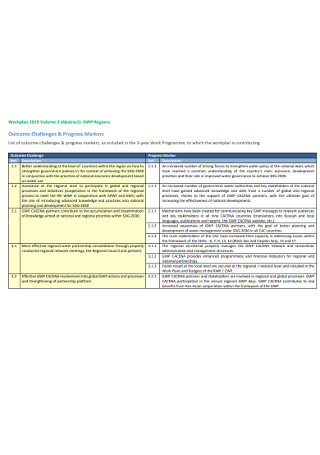
Sample Work Plan
-

General Work Plan
-

Corporation Work Plan
-

Transportation Commission Work Plan
-

Sample Teamwork Work Plan
-

Employer Work Plan
-

Safety and Health Work Plan
-
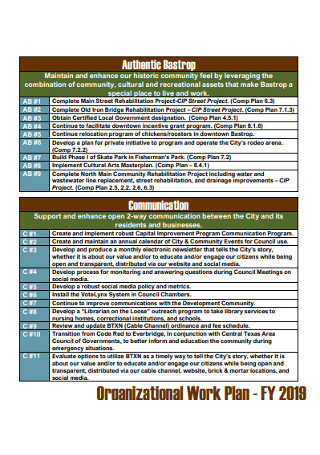
Organizational Work Plan
-

Annual Work Plan Format
-

Quality Improvement Work Plan
-

Volunteer Work Development Plan
-

Objective Work Plan
-

Adopted Wake Transit Work Plan
-

Project Work Plan
-
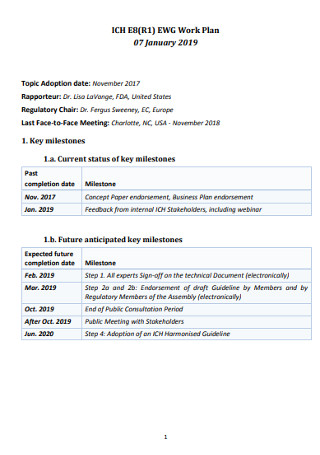
Simple Work Plan
-

Proposed Work Plan
-

Office of Audits Annual Work Plan
-

General Event Work Plan
-

Five-Year Work Plan
-
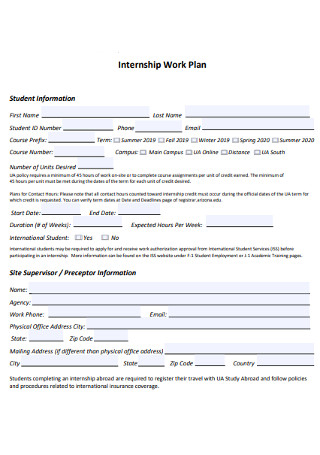
Internship Work Plan
-
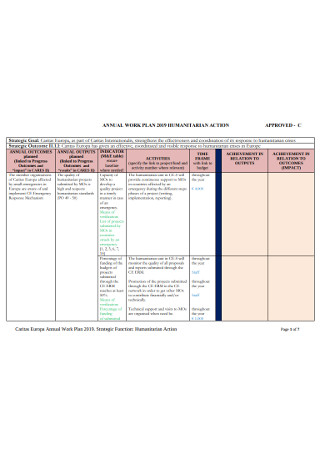
Annual Action Work Plan
-

City Council Vision and Work Plan
-

Learning Work Plan
-

College Work Plan
-

Sample State Work Plan
-

Health Care Work Plan
-

Individual Work Plan
-
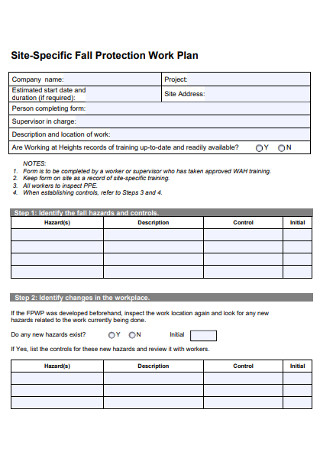
Fall Protection Work Plan
-

Sports Work Plan
-

Finance Audit Committee Work Plan
-

Housing Work Plan
-

Auditor General’s Office Work Plan
-

Work Abatement Plan
-

Education work plan
-

Financial Participation Work Plan
-

Board Annual Goals and Work Plan
-

Sample Computer System Work Plan
-

Vehicle Work Plan
-

Basic Work Plan Template
-

Work Plan Formulation Table
-

Sample Work Plan for Week
-

Work Plan Worksheet
-

Investigation Work Plan
-

Sample Annual Work Plan Template
download now
FREE Work Plan s to Download
Work Plan Format
Work Plan Samples
What is a Work Plan?
Types of Work Plans
How to Create a Work Plan
FAQS
What is the difference between a work plan and a to-do list?
How does a work plan improve team collaboration?
What are common challenges in creating a work plan?
How can a work plan enhance resource management?
What should be included in a comprehensive work plan?
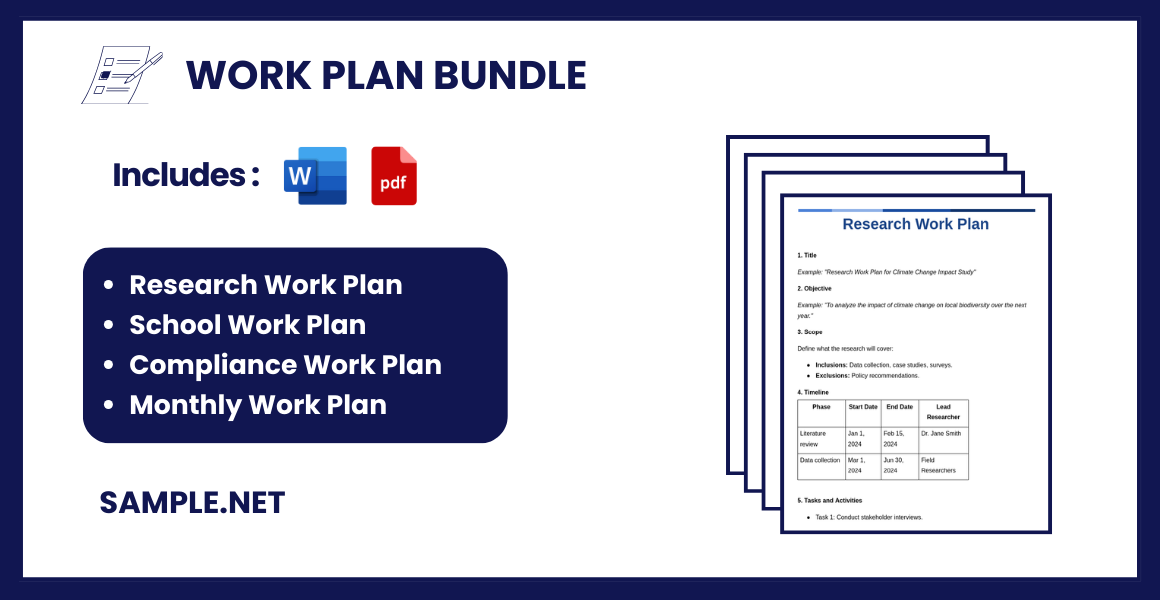
Work Plan Format
1. Title
Provide a concise title summarizing the work plan’s purpose.
Example: “Work Plan for Q1 2024 Marketing Campaigns”
2. Objective
Clearly define the primary goal(s) of the work plan.
Example: “To enhance brand visibility and generate 20% more leads compared to Q1 2023.”
3. Scope
Explain the boundaries and deliverables of the project.
- Inclusions: List specific tasks or outcomes.
- Exclusions: Highlight what is out of scope to avoid confusion.
4. Timeline
Include key milestones and deadlines.
Example:
| Task | Start Date | End Date | Owner |
|---|---|---|---|
| Content creation | Jan 5, 2024 | Jan 25, 2024 | Marketing Team |
| Campaign launch | Feb 1, 2024 | Feb 15, 2024 | Marketing Lead |
5. Tasks and Activities
Detail specific actions to be undertaken.
- Task 1: [Action and Description]
- Task 2: [Action and Description]
6. Resources Needed
List all resources, including human, financial, and material resources.
- Team members and roles.
- Budget allocation.
- Tools or software requirements.
7. Risk Management
Identify potential risks and their mitigation strategies.
| Risk | Impact | Mitigation |
|---|---|---|
| Resource unavailability | High | Allocate backup team members. |
8. Expected Outcomes
Summarize the deliverables and outcomes expected upon completion.
Example: “Increased web traffic by 25%, 1,000 new email subscribers, and higher social media engagement.”
9. Monitoring and Evaluation
Describe how progress will be tracked and evaluated.
- Weekly status meetings.
- KPI reviews every month.
10. Approval and Signatures
Include a section for stakeholders to review and approve.
Example:
Prepared by: [Your Name]
Approved by: [Manager/Director Name]
What is a Work Plan?
A work plan is a detailed guide that outlines how a specific project or goal will be accomplished. It typically includes objectives, tasks, timelines, resource allocations, and performance metrics. Work plans are crucial for maintaining focus, ensuring effective collaboration, and managing resources efficiently. By providing clear direction, they help avoid confusion and keep everyone aligned toward the project’s ultimate goals. You can also see more on Weekly Plan.
Types of Work Plans

1. Personal Work Plan
This type of work plan is designed for individuals to manage their personal goals, schedules, and priorities. It includes activities like self-improvement, career planning, or daily task management.
2. Team Work Plan
A team work plan organizes tasks and responsibilities among group members working toward a shared objective. It ensures clear communication and accountability within the team. You can also see more on Work Plan Strategy.
3. Project Work Plan
A project work plan details the scope, deliverables, timelines, and resources required for specific projects. It helps in tracking milestones and ensuring the project’s success.
4. Strategic Work Plan
Strategic work plans focus on long-term goals and align tasks with an organization’s overall mission. They include broader objectives and policies to guide future growth.
5. Operational Work Plan
This plan outlines day-to-day operations and tasks needed to keep an organization or team running smoothly. It includes routine activities and short-term goals. You can also see more on Team Plan.
How to Create a Work Plan
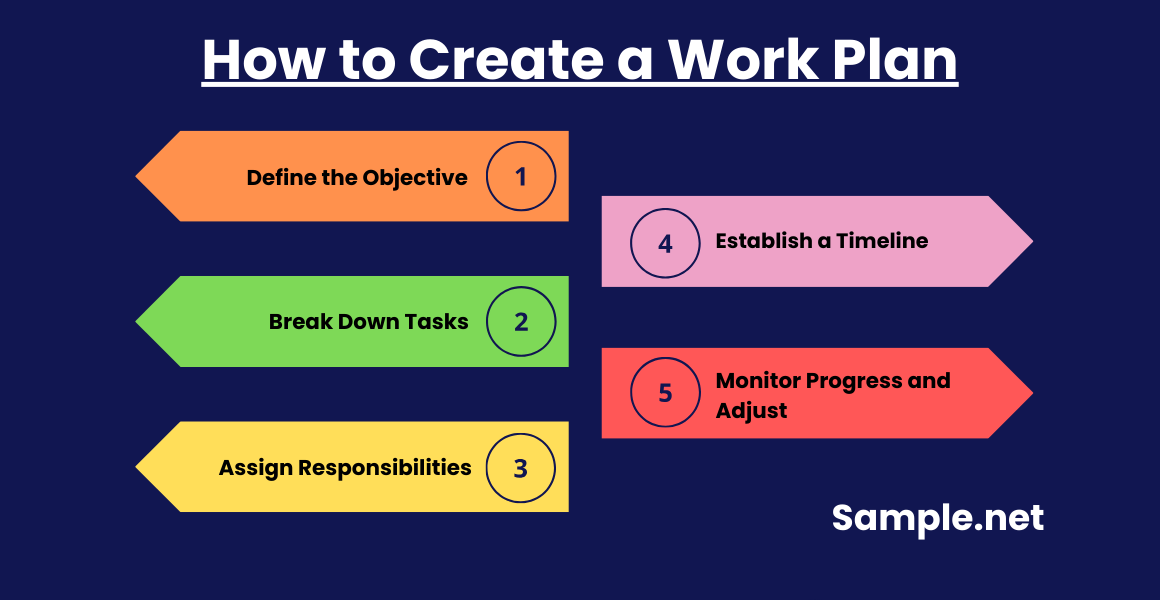
Step 1: Define the Objective
Start by identifying the primary goal or purpose of the work plan. Ensure the objective is clear, measurable, and achievable. Ask yourself: What do you want to accomplish? For example, if the work plan is for a marketing campaign, the goal might be to increase website traffic by 30% in three months. Defining a specific objective sets the foundation for a focused and actionable plan. You can also see more on Monthly Action Plan.
Step 2: Break Down Tasks
List all tasks and activities required to achieve the objective. Organize these tasks into smaller, manageable components. Consider dependencies and sequencing. For instance, if creating a website, tasks might include domain registration, design, development, and testing. Breaking tasks into smaller steps ensures no important detail is overlooked and makes tracking progress easier.
Step 3: Assign Responsibilities
Determine who will handle each task. Assign roles and responsibilities based on expertise and availability. This ensures accountability and avoids overlapping duties. For example, assign content creation to the writer, graphic design to the designer, and testing to the developer. Clear role allocation minimizes misunderstandings and enhances team efficiency. You can also see more on Employee Work Plan.
Step 4: Establish a Timeline
Set realistic deadlines for each task. Create a timeline that balances urgency with feasibility. Use tools like Gantt charts or calendars to visualize the schedule. For instance, if the work plan is for a product launch, allocate time for pre-launch marketing, testing, and final adjustments. A well-defined timeline keeps the project on track.
Step 5: Monitor Progress and Adjust
Implement a system for tracking progress and making adjustments. Regularly review the work plan to ensure tasks are being completed on time. If challenges arise, update the plan accordingly. For example, if a task takes longer than anticipated, shift resources or extend deadlines. Continuous monitoring ensures the plan remains effective and relevant.
In conclusion, a work plan is essential for achieving clarity, efficiency, and success in any endeavor. By providing a clear framework and defined roles, it ensures streamlined workflows and accountability. Crafting a detailed work plan helps translate vision into actionable steps, fostering organization and enhancing productivity across individuals and teams. You can also see more on Daily Action Plan.
FAQS
What is the difference between a work plan and a to-do list?
A work plan is more detailed, encompassing goals, timelines, and resources, whereas a to-do list focuses on daily or immediate tasks.
How does a work plan improve team collaboration?
A work plan clarifies roles, responsibilities, and timelines, ensuring everyone understands their part in the project. This reduces misunderstandings and fosters teamwork, as tasks are organized and communication channels are established. You can also see more on Weekly Action Plan.
What are common challenges in creating a work plan?
Common challenges include setting unrealistic deadlines, unclear objectives, and inadequate resource allocation. Addressing these requires careful planning and input from stakeholders to ensure feasibility.
How can a work plan enhance resource management?
By detailing the required resources for each task, a work plan prevents wastage and ensures optimal use. It helps identify potential shortages early, allowing for proactive solutions.
What should be included in a comprehensive work plan?
A comprehensive work plan should include objectives, tasks, timelines, assigned responsibilities, required resources, and monitoring mechanisms. These elements ensure thorough planning and execution. You can also see more on HR Department Plan.
